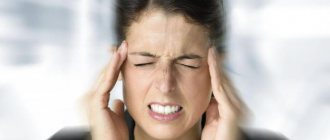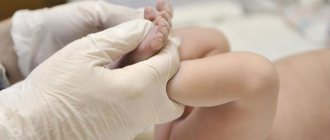What is vascular parkinsonism?
Vascular parkinsonism is a cerebrovascular lesion accompanied by decreased movement, tremors and muscle rigidity. It is possible to distinguish acute and chronic course of the process. In the first case, extrapyramidal symptoms appear against the background of a vascular accident (stroke). Chronic pathology develops gradually, the clinical picture appears gradually.
Classification according to ICD
In ICD 10, vascular parkinsonism is designated as G21.4. This prescription is found in medical histories and outpatient cards. Physicians use this coding to facilitate recording and sharing of information. Vascular parkinsonism ICD 10 - diagnosed by neurologists after a thorough diagnosis.
Why does the disease develop?
As a result of destruction of the walls of the cerebral arteries, the vascular bed becomes permeable. Some of the blood leaves the capillaries and accumulates in the brain tissue. In this case, swelling develops around the vessel. The nutrition of neurons is disrupted and the process of their death begins. When more than 80% of the subcortical structures are affected, the symptoms of the disease are formed. This is how the disease behaves when it is chronic.
The acute form is the result of an ischemic stroke. In this case, an entire section of brain tissue dies from lack of oxygen. If the lesion occurs in the area of the basal ganglia, then vascular parkinsonism syndrome is formed.
Clinical picture
Vascular parkinsonism: Symptoms differ from Parkinson's disease.
Clinic:
- The first signs appear on both sides at once;
- A decrease in the number of movements and rigidity manifests itself in the lower extremities;
- “Feet sticking to the floor”;
- Postural instability appears quite early;
- The characteristic posture of a Parkinson's patient is formed.
Vascular parkinsonism does not have classic symptoms. Tremor is detected very rarely, hypokinesia affects only the lower extremities, a decrease in intelligence, and frontal syndrome (impaired memory, speech, attention, thinking) progresses.
What is vascular tremor?
Vascular tremor occurs when certain brain structures are damaged. The suggested areas are the midbrain, thalamus, cerebellum, or pons. It can accompany parkinsonism syndrome, but more often appears in isolation. This hyperkinesis occurs after a stroke or appears gradually. Vascular tremors are always accompanied by other symptoms.
Diagnostic methods
The pathology can be preliminarily diagnosed if the symptoms described are combined with any serious vascular diseases in the anamnesis.
The following neuroimaging methods are used as instrumental diagnostic methods:
- standard or single-photon emission computed tomography;
- diffuse optical tomography;
- positron emission tomography;
- MRI;
- magnetoencephalography;
- functional magnetic resonance imaging.
Such methods make it possible to determine the biochemical characteristics of the brain, as well as the functions and activity of its structures and exclude oncological formations as the cause of parkinsonism.
Symptoms
Main manifestations of the disease:
- hypokinesia in the lower extremities,
- rapid development of postural instability,
- bilateral manifestation of symptoms.
This clinical picture is nonspecific.
Diagnostic methods
When the first signs of the disease appear, you should consult a neurologist. After examining the patient and collecting anamnesis, a specialist may suspect this pathology. In this case, the doctor must identify the connection between akinetic-rigid syndrome and cerebrovascular damage.
For differential diagnosis you will need:
- Ultrasound scanning of neck vessels;
- MRI of the head and neck.
Ultrasound allows you to assess the patency of the carotid arteries. They help feed the brain. In cases of stenosis, wall lesions, and thromboembolism, a vascular diagnosis can be assumed. If the arterial vessels are not changed, another cause of the disease should be looked for.
MRI can detect damage to the structures responsible for parkinsonian syndrome. Foci are identified in the basin of the anterior and middle cerebral arteries.
Complications of the disease
With pathology, the clinical picture increases gradually. However, postural instability develops over several months. In this case, the patient cannot move independently and loses the ability to self-care. In older patients, injuries may occur.
The emotional background is disrupted. Helplessness leads to depression, decreased cognitive skills, and dementia. Muscle rigidity causes pain; over time, joints lose mobility and form contractures.
Vascular parkinsonism and Parkinson's disease: differences
Despite the similarity of symptoms, the diseases have different origins and differences in treatment. Vascular parkinsonism and Parkinson's disease: the differences between these nosologies are listed below.
- In parkinsonism, a connection with cerebral vascular damage is revealed. In Parkinson's disease, the cause of symptoms is unknown;
- Vascular symptoms are characterized by the rapid development of severe complications (postural instability). Primary parkinsonism progresses slowly. Decades pass from the initial stage to the formation of immobility;
- Treatment of the primary and secondary (vascular) forms of the disease is significantly different. For the vascular type, Levadopa drugs are rarely used;
- The secondary syndrome is rarely accompanied by tremor. Trembling appears in 4% of cases. In Parkinson's disease, hyperkinesis almost always appears;
- Vascular parkinsonism is curable with early treatment. Parkinson's disease can only be controlled; there is no panacea for returning to normal life yet.
Stages of development of Parkinson's disease according to Hoehn-Yahr
Stage 0. The person is healthy, there are no signs of disease.
Stage 1. Minor motor disturbances in one hand. Nonspecific symptoms appear: impaired sense of smell, unmotivated fatigue, sleep and mood disorders. Then the fingers begin to tremble when excited. Later, the tremor intensifies, and tremors also appear at rest.
Intermediate stage (“one and a half”). Localization of symptoms in one limb or part of the body. Constant tremor that disappears during sleep. The whole hand may tremble. Fine motor skills become difficult and handwriting deteriorates. There is some stiffness in the neck and upper back, and limited swing movements of the arm when walking.
Stage 2. Motor disorders extend to both sides. Tremor of the tongue and lower jaw is possible. Possible drooling. Difficulty moving joints, worsening facial expressions, slow speech. Sweating disorders; the skin can be dry or, on the contrary, oily (dry palms are typical). The patient is sometimes able to restrain involuntary movements. A person copes with simple actions, although they are noticeably slower.
Stage 3. Hypokinesia and rigidity increase. The gait takes on a “puppet” character, which is expressed in small steps with feet placed parallel to each other. The face becomes mask-like. There may be a head tremor similar to nodding movements (“yes-yes” or “no-no”). The formation of a “petitioner pose” is characteristic - a head bent forward, a hunched back, arms pressed to the body and bent at the elbows, legs half-bent at the hip and knee joints.
Movements in the joints are like a “gear mechanism.” Speech impairments progress – the patient becomes fixated on repeating the same words. A person serves himself, but with sufficient difficulties. It is not always possible to fasten the buttons and get into the sleeve (help would be desirable when dressing). Hygiene procedures take several times longer.
Stage 4. Severe postural instability - it is difficult for the patient to maintain balance when getting out of bed (may fall forward). If a standing or moving person is slightly pushed, he continues to move by inertia in the “given” direction (forward, backward or sideways) until he encounters an obstacle.
Falls that can lead to fractures are common. It is difficult to change body position while sleeping. Speech becomes quiet, nasal, and slurred. Depression develops and suicide attempts are possible. Dementia may develop. In most cases, outside assistance is required to carry out simple daily activities.
Stage 5. The last stage of Parkinson's disease is characterized by the progression of all motor disorders. The patient cannot stand up or sit down, and does not walk. He cannot eat on his own, not only because of tremors or stiffness of movements, but also because of swallowing disorders. Control over urination and bowel movements is impaired. The person is completely dependent on others, his speech is difficult to understand. Often complicated by severe depression and dementia.
Treatment
Treatment of vascular parkinsonism includes a set of measures. The first direction of therapy is to restore blood supply to the brain, combat ischemia, and prevent stroke.
The following types of drugs are used:
- Antihypertensive (normalization of blood pressure) – target level 139/100 mmHg;
- Prescription of antiplatelet agents (aspirin 75 mg, clopidogrel 75 mg);
- Prevention and treatment of atherosclerosis (statins, fibrates).
If there is a risk of stroke, anticoagulants are used to prevent blood clotting and the formation of blood clots.
Symptomatic treatment: vascular parkinsonism has a clinical picture that makes it difficult for the patient to move and self-care. Therefore, the second line of therapy is aimed at relieving the symptoms of parkinsonism.
Secondary types of the disease are known to respond poorly to Levadopa treatment. Therefore, therapy is started with the maximum dose. The result is assessed after 1-3 months. The drugs of choice are amantadines.
Vascular parkinsonism: symptoms and treatment.
- The appearance of akinesia and postural instability - drugs Levadopa and Amantadine;
- Decreased memory, cognitive abilities - nootropics;
- For depression - antidepressants.
Additional therapies
Exercise therapy is the most effective auxiliary method. Classes can be conducted at home or in groups. Exercises allow you to relieve tension from the muscles of the lower extremities and form motor stereotypes.
Exercises lift your mood, improve your well-being, and reduce symptoms of depression. Massage and physiotherapy should be used with caution. With vascular disease, many patients experience increased blood pressure due to such treatment.
Telomerase activation is a promising method that can help combat many neurodegenerative diseases. It is dangerous to use homeopathic and folk remedies for such a disease. But “grandmother’s” recipes are effective in combating symptoms (viburnum for high blood pressure, dandelion roots for cholesterol).
Prognosis and prevention
Chronic disease vascular parkinsonism: treatment continues throughout life. The prognosis for the disease is good. With adequate therapy and a healthy lifestyle, the symptoms of parkinsonism quickly go away. But treatment continues for life. If prevention is not given attention, symptoms will return.
Etiology
The main reasons for the development of parkinsonism include:
- medications (neuroleptics, metoclopramide, prochlorperazine);
- intoxication;
- viral encephalitis;
- structural changes in the brain matter after strokes, tumors and other cerebral pathologies;
- traumatic brain injuries;
- vascular disorders;
- Wilson-Konovalov disease.
Parkinsonism can also occur against the background of other neurodegenerative diseases: Alzheimer's disease, multifocal system atrophy, dementia with Lewy bodies, etc.
General information
In terms of frequency of occurrence in the general structure of parkinsonism, drug-induced parkinsonism (DP) ranks second after Parkinson's disease. According to various estimates, LP accounts for 23-37% of all diagnosed cases of parkinsonism. Pharmaco-induced parkinsonism is the most common type of neuroleptic syndrome and occurs in 10-25% of patients taking antipsychotics.
The disease occurs predominantly among patients aged 60-80 years, more often in women. In modern neurology, the diagnosis of LP is a pressing issue, since in some cases its manifestations are mistakenly interpreted as a new pathology or as a consequence of natural aging processes. According to statistics, the prescription of antiparkinsonian drugs instead of discontinuation of therapy that provokes parkinsonism occurs in 36% of cases.
Drug-induced parkinsonism
Secondary parkinsonism is a general clinical concept that includes all cases of symptoms of Parkinson’s disease associated with damage to the neurons of the basal ganglia of the brain under the influence of various exo- and endogenous factors. Unlike secondary parkinsonism, idiopathic Parkinson's disease occurs independently, without connection with any factor affecting the brain.
Secondary parkinsonism accounts for about 30%; in the remaining cases, Parkinson's disease is diagnosed. In accordance with the etiology, drug-induced, post-traumatic, toxic, post-hypoxic, post-infectious, and vascular parkinsonism are distinguished. The most common is drug-induced parkinsonism. Most of its cases are due to neuroleptic malignant syndrome, which develops with prolonged or inadequate use of neuroleptics.
Secondary parkinsonism
Pathogenesis
Each of the above medications has a blocking effect on the dopaminergic system of the brain. The predominant mechanisms are blocking of D2 receptors in the striatum and disruption of the release of dopamine from presynaptic terminals. The result is the dominance of acetylcholine effects, excessively activating the caudate nucleus. The latter has an inhibitory effect on the motor sphere, which is clinically manifested by oligobradykinesia - a decrease in the number, speed, amplitude of movements. Studies have shown that the clinical symptoms of LP develop when more than 75% of D2 receptors are blocked.
A certain pathogenetic role is assigned to latent dopamine deficiency, which manifests itself with the additional dopamine-blocking effect of the drug taken. Its presence is confirmed by the progression of parkinsonian symptoms in 30% of cases after stopping the provoking drug.
The 6q25.2-q27 locus is responsible for the synthesis of the parkin protein, which is involved in the metabolism of alpha-synuclein, ensuring its inclusion in the formation of Lewy bodies. Gene mutations cause the absence of the protein in cerebral neurons, which leads to dysmetabolism and accumulation of alpha-synuclein, and blocks the formation of Lewy bodies, which presumably perform a protective function in neurodegenerative processes. Changes in metabolism and accumulation of synuclein lead to degeneration and death of dopamine-producing nerve cells located primarily in the substantia nigra. Dopamine has an inhibitory effect on neurons of the caudate nucleus. Its deficiency causes the predominance of stimulating (acetylcholine) effects. Excessive activation of the caudate nucleus causes an increase in its inhibitory effect on motor skills, which is clinically manifested by the main symptom of parkinsonism - a decrease in motor activity (hypokinesia).
The pathomorphological picture is characterized by the absence of Lewy bodies in midbrain neurons. In the cells of the substantia nigra, red nuclei, nucleus coeruleus, and cerebral cortex, neurofibrillary tangles are detected - thread-like intraneuronal inclusions, typical of a number of degenerative processes. Histochemical studies determine the absence of Parkin protein in neurons.
Complications
The gradual progression of the disease leads to a decrease in the patient’s ability to self-care. Disorders of brain activity become the cause of dementia - acquired dementia. However, the most dangerous is pseudobulbar palsy - a violation of muscle activity due to the lack of innervation.
The disease aggravates the condition of elderly patients. Postural instability leads to falls, complicated by various injuries, often fractures due to age-related osteoporosis. The lack of timely diagnosis causes the progression of motor dysfunction up to the limitation of independent movement. The low mood and isolation that accompany LP can be complicated by the development of depression.
Discontinuation of the drug leads to regression of symptoms within several months, sometimes the reverse development of symptoms lasts more than a year. In 30% of patients, stabilization or further progression of parkinsonian manifestations is noted, which is due to the previous latent course of the degenerative process.
Isolated cases of the development of neurodegenerative pathology several months and years after undergoing LP have been described. The main measure for the prevention of LP is adequate selection of the drug, its dosage and duration of therapy. For elderly people, it is better to prescribe domperidone, which is unable to penetrate the BBB, as an antiemetic drug.










